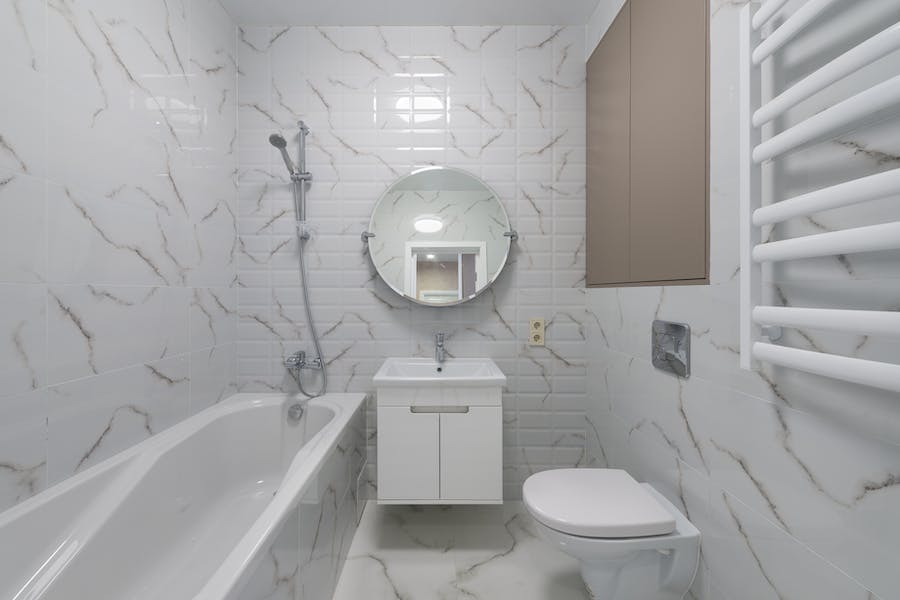A malfunctioning toilet can be a source of frustration and inconvenience in any household. One of the most common issues people encounter is a toilet that needs to fill up with water properly. When this happens, it disrupts daily routines, leading to wasted water and increased utility bills. This article will explore why your toilet might not be filling up with water and provide practical solutions to help you diagnose and fix the problem, ensuring your toilet operates smoothly again. Whether you’re a seasoned DIY enthusiast or a novice homeowner, this troubleshooting guide will empower you to tackle this common plumbing issue confidently.
Why Is My Toilet Not Filling Up With Water?
Your toilet not filling up with water could be due to several reasons. First, check if the water supply valve near the toilet’s base is fully open. If it’s partially closed or clogged, it can restrict water flow. Low water pressure in your plumbing system may also be a culprit. A malfunctioning fill valve or a faulty flapper can prevent water from entering the tank correctly. To resolve this issue, start by ensuring the water supply valve is open, and if the problem persists, consider inspecting and possibly replacing the fill valve or flapper. If you need more confidence in your DIY plumbing skills, it’s wise to consult a professional plumber for a thorough assessment and repair.
What Are The Common Causes Of A Toilet Not Filling With Water?
A toilet not filling up with water can be a frustrating issue, and there are several common causes to consider:
Water Supply Issues: Problems with the water supply to your toilet can be a primary reason. Check if the shut-off valve, typically located near the toilet’s base, is fully open. It can restrict water flow if partially closed or clogged with debris. Low water pressure in your plumbing system can also hinder the tank from filling adequately.
Faulty Fill Valve: The fill valve regulates the water level in the toilet tank. When it malfunctions, it can either overfill the tank or not allow water to enter it. Signs of a faulty fill valve include constant running water or inconsistent water levels in the tank.
Flapper Or Flush Valve Problems: The flapper and flush valve control the flushing mechanism in the toilet. A malfunctioning flapper can result in water continuously leaking from the tank into the bowl, preventing the tank from refilling properly. A damaged or misaligned flush valve can also disrupt the filling process.
Clogged Water Supply Line: Debris or mineral deposits can sometimes accumulate in the water supply line leading to the toilet. This buildup can restrict water flow and prevent the tank from filling.
Float Ball Issues: Some older toilet models use a float ball connected to a float arm to regulate water levels in the tank. If the float ball is damaged or misaligned, it may not effectively control the fill valve, causing the tank to either overfill or not fill.
Blocked Vent Pipe: The plumbing system in your home relies on vent pipes to maintain proper air pressure. If the vent pipe associated with your toilet becomes clogged or obstructed, it can create a vacuum effect that prevents water from filling the tank as it should.
Leaking Tank: In some cases, a crack or damage to the toilet tank itself can lead to water leakage, preventing the tank from filling to the desired level. Inspect the tank for any visible cracks or signs of damage.
Sediment Buildup: Over time, sediment and mineral deposits can accumulate in the fill valve, flapper, or other components within the toilet tank. This buildup can hinder their proper functioning, leading to issues with water filling.
Electrical Or Sensor Problems (In Some Modern Toilets): Some modern toilets feature electronic sensors and components for water-saving features or advanced flush mechanisms. Electrical malfunctions or sensor issues can disrupt the tank-filling process.
Importance Of A Properly Functioning Toilet
A properly functioning toilet is paramount for various reasons, both for the well-being of individuals and the efficient operation of a household or building. Here are some key reasons highlighting the importance of a toilet that works correctly:
Properly functioning toilets facilitate the safe disposal of human waste. This helps prevent the spread of diseases, reduces exposure to harmful bacteria, and maintains overall hygiene in the living environment. Access to clean and functioning toilets is essential for personal health and well-being. A malfunctioning toilet can lead to discomfort, inconvenience, and potential health issues if not addressed promptly.
Modern toilets are designed to use water efficiently. A malfunctioning toilet can waste significant water through continuous running or leaks. Fixing toilet issues can contribute to water conservation and lower utility bills. Wasted water due to toilet problems hurts the environment. Conserving water by fixing toilet issues helps reduce the strain on water resources and decreases the carbon footprint associated with water treatment and distribution.
A leaking or overflowing toilet can cause significant damage to floors, walls, and surrounding structures. A properly functioning toilet prevents these costly and disruptive water damage incidents. A malfunctioning toilet can be a significant inconvenience. It may require frequent plunging, have slow flushing times, or produce unpleasant odors. A properly functioning toilet provides comfort and convenience to users. A well-maintained and properly functioning toilet in residential settings contributes to the bathroom’s overall aesthetic appeal. In addition, when selling or renting a property, a working toilet adds to its value and marketability.
Solutions And DIY Troubleshooting Steps
When faced with a toilet not filling up with water, you can use several solutions and DIY troubleshooting steps to diagnose and resolve the issue. Here’s a detailed explanation of these steps:
Check The Water Supply Valve:
Start by examining the water supply valve on the wall or floor near the toilet’s base. Ensure that it is fully open. If the valve is partially closed or clogged with debris, it can restrict water flow to the toilet tank. Turn it counterclockwise to open it completely.
Test Water Pressure:
Low water pressure can hinder the filling process. Verify if other fixtures in your home, such as faucets and showers, are experiencing similar low-pressure issues. If so, the problem may be related to your plumbing system, and you may need to contact a professional plumber to address it.
Clear Clogs In The Water Supply Line:
If the water supply valve is open but does not reach the toilet tank, there may be a clog in the water supply line. Shut off the water supply valve, disconnect the supply line from the toilet, and inspect it for any obstructions. Use a bucket to catch any water that may spill during this process.
Inspect And Adjust The Fill Valve:
The fill valve regulates the water level in the tank. If it’s not functioning correctly, it can lead to a toilet not filling properly. Inspect the fill valve for wear, damage, or debris. Some fill valves have an adjustment screw that allows you to control the water level. Adjust it as needed to achieve the desired water level.
Replace The Fill Valve:
If the fill valve is malfunctioning and cannot be adjusted or repaired, consider replacing it. To do this, shut off the water supply, flush the toilet to empty the tank, and follow the manufacturer’s instructions for replacing the fill valve. Ensure you have the correct replacement part.
Check The Flapper Or Flush Valve:
A damaged or improperly functioning flapper or flush valve can leak water continuously into the bowl, preventing the tank from refilling properly. Inspect the flapper for signs of wear or deterioration. Clean it if necessary or replace it if damaged.
Replace The Flapper Or Flush Valve:
If the flapper or flush valve is beyond repair, replace it with compatible parts. Be sure to turn off the water supply, flush the toilet to empty the tank, and follow the manufacturer’s instructions for installation.
When To Seek Professional Help?
Knowing when to seek professional help for a toilet not filling up with water is crucial to avoid potential complications and ensure a safe and effective resolution. Here are some indications that it’s time to call a professional plumber:
- Persistent Issues: If you’ve attempted basic troubleshooting steps, such as checking the water supply valve, adjusting the fill valve, and inspecting the flapper, but the problem persists or worsens, it’s a clear sign that a more profound issue may exist.
- Multiple Toilets Affected: If multiple toilets in your home are experiencing the same problem simultaneously, it’s likely a problem with your plumbing system rather than an isolated toilet issue. Professional help is needed to diagnose and address systemic plumbing problems.
- Unfamiliarity With Plumbing Repairs: If you need more experience in plumbing repairs or are comfortable working with plumbing components, it’s safer to rely on a professional plumber. Incorrectly diagnosing or attempting repairs can lead to further damage or water leaks.
- Water Leaks Or Structural Damage: If you notice water leaking from the toilet tank onto the floor or causing damage to surrounding structures, it’s crucial to address the issue promptly. Water damage can be expensive, and a plumber can assess the situation and prevent further damage.
- Complex Toilet Models: Modern toilets may feature advanced technology, electronic components, or proprietary parts that require specialized knowledge and tools for repair. Professional plumbers are trained to handle these complexities.
- Blocked Vent Pipe: If you suspect that a blocked vent pipe is causing the issue (for example, if you hear gurgling sounds when using other fixtures), addressing vent pipe problems typically requires professional expertise to access and clear the obstruction safely.
- Unexpected Odors Or Sounds: If you notice unusual odors or sounds coming from the toilet or the plumbing system, it may indicate a more complex problem, such as a blocked sewer line, that requires professional attention.
- Regulatory Compliance: If your toilet needs repairs or replacements to comply with local building codes or regulations, hiring a licensed plumber is essential to ensure the work meets the necessary standards.
Conclusion
A toilet not filling up with water can be frustrating, but understanding the common causes and implementing the appropriate solutions can help restore your toilet’s functionality. Properly functioning toilets are essential for hygiene, health, water conservation, and overall comfort in your home or workplace. You can often resolve the issue by checking the water supply valve, testing water pressure, clearing clogs, inspecting and adjusting the fill valve, and addressing flapper or flush valve problems. Regular maintenance and prompt DIY troubleshooting can help prevent future problems.








